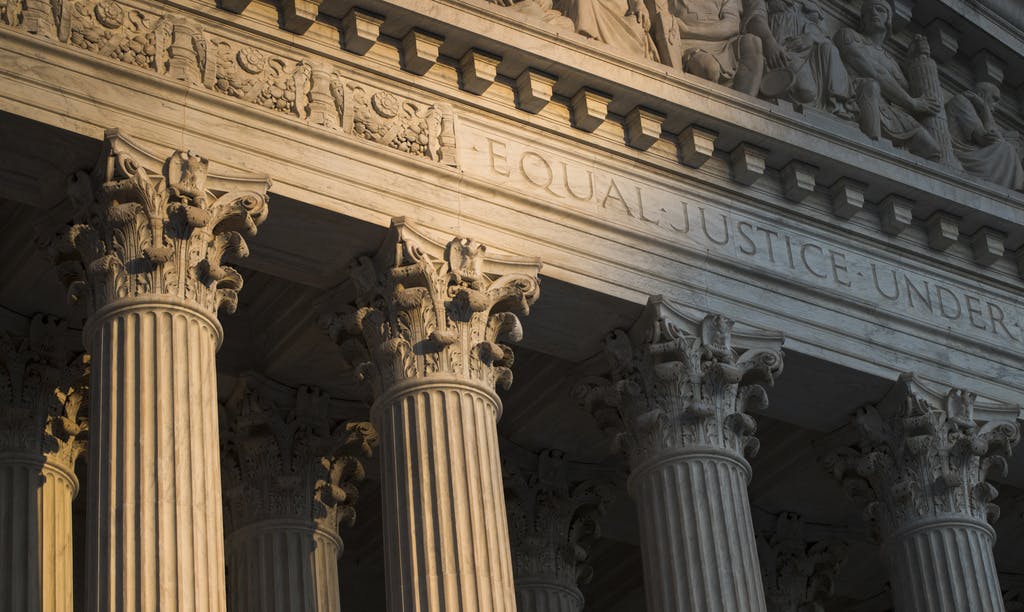Justices Probe for Narrow Resolution to Case That Has Potential To Upend Tax Code
Justices at the high court appear to be eyeing a narrow ruling in the most important tax case of the year.

In oral arguments Tuesday, Supreme Court justices appeared concerned about the implications of Moore v. United States, a case that has been closely watched due to its potential implications for American tax policy.
The case centers on a 2017 law that changed the top marginal tax rate for repatriated cash and non-cash assets. In the case, plaintiffs Charles and Kathleen Moore are suing the federal government, arguing that the repatriation taxes are unconstitutional.
The Moores owned a stake in an Indian tools manufacturing plant and say that their stake in the company does not technically constitute income because, in their opinion, they did not technically receive any income, such as dividends, from their investment.
The Moores appealed a lower court decision affirming the constitutionality of a repatriation tax with the hopes of affirming “that unrealized gains are not income.”
The Moores’ case sparked interest because of the scope of the arguments they planned to present. The case, in the assessment of many lawyers, had the potential to preemptively outlaw a wealth tax, for one.
At oral arguments, though, it appeared that the justices were probing at a narrower ruling in the case, with justices asking both the attorney for the Moores, David Rivkin, and the solicitor general, Elizabeth Prelogar, about the limits of their arguments.
“How far may Congress go in attributing income to someone who has not realized that income in the standard understanding of that term?” Justice Samuel Alito asked Ms. Prelogar.
Justice Alito also referenced extensive coverage in the press concerning how broadly the Moores’ arguments, if adopted, could affect American tax code, saying that it was “a fair argument” to ask about the limitations of the government’s position.
Justice Neil Gorsuch appeared to share Justice Alito’s concern about the limits on Ms. Prelogar’s argument, later alluding to a potentially narrow future ruling, saying, “There is room for some narrow ground.”
At one point, Justice Amy Coney Barrett posed the question of whether the court needs to consider defining income in a new way. Ms. Prelogar responded by saying that the court did not need to adopt a universal definition of income in order to resolve the questions at hand.
The court’s liberal justices, like Justice Sonia Sotomayor, also asked the attorney for the Moores, Andrew Grossman, about the limits of his arguments, saying, “Are you asking us to overturn 100 years of precedent?”
Justice Elena Kagan asked of the attorney arguing the case for the Moores, “Why is it that you think we can decide for you without putting any of those kinds of very established taxation schemes at risk?”
While it’s impossible to divine how the Supreme Court might rule, a narrow ruling could sidestep some of the most serious consequences of the case from a budget perspective.
A Tax Foundation Analysis found that a maximalist ruling from the court could result in a decline in federal tax revenue of $5.7 trillion over a 10-year period.
A more narrow ruling focused squarely on repatriation taxes would reduce federal revenue by a comparatively modest $3.5 billion over the same time period if the court ruled in favor of the Moores.

